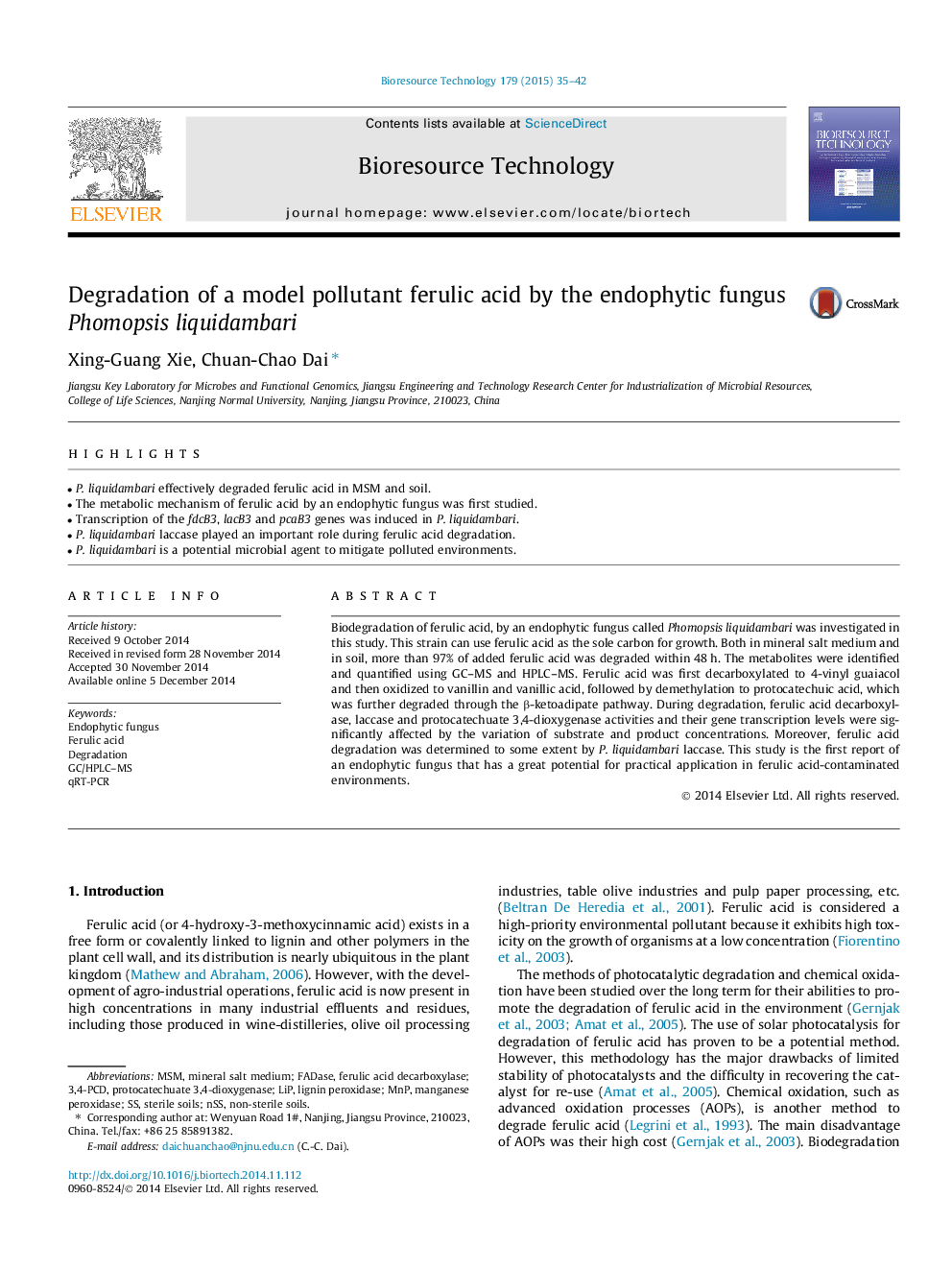| Article ID | Journal | Published Year | Pages | File Type |
|---|---|---|---|---|
| 680160 | Bioresource Technology | 2015 | 8 Pages |
Abstract
Biodegradation of ferulic acid, by an endophytic fungus called Phomopsis liquidambari was investigated in this study. This strain can use ferulic acid as the sole carbon for growth. Both in mineral salt medium and in soil, more than 97% of added ferulic acid was degraded within 48 h. The metabolites were identified and quantified using GC-MS and HPLC-MS. Ferulic acid was first decarboxylated to 4-vinyl guaiacol and then oxidized to vanillin and vanillic acid, followed by demethylation to protocatechuic acid, which was further degraded through the β-ketoadipate pathway. During degradation, ferulic acid decarboxylase, laccase and protocatechuate 3,4-dioxygenase activities and their gene transcription levels were significantly affected by the variation of substrate and product concentrations. Moreover, ferulic acid degradation was determined to some extent by P. liquidambari laccase. This study is the first report of an endophytic fungus that has a great potential for practical application in ferulic acid-contaminated environments.
Keywords
Related Topics
Physical Sciences and Engineering
Chemical Engineering
Process Chemistry and Technology
Authors
Xing-Guang Xie, Chuan-Chao Dai,
